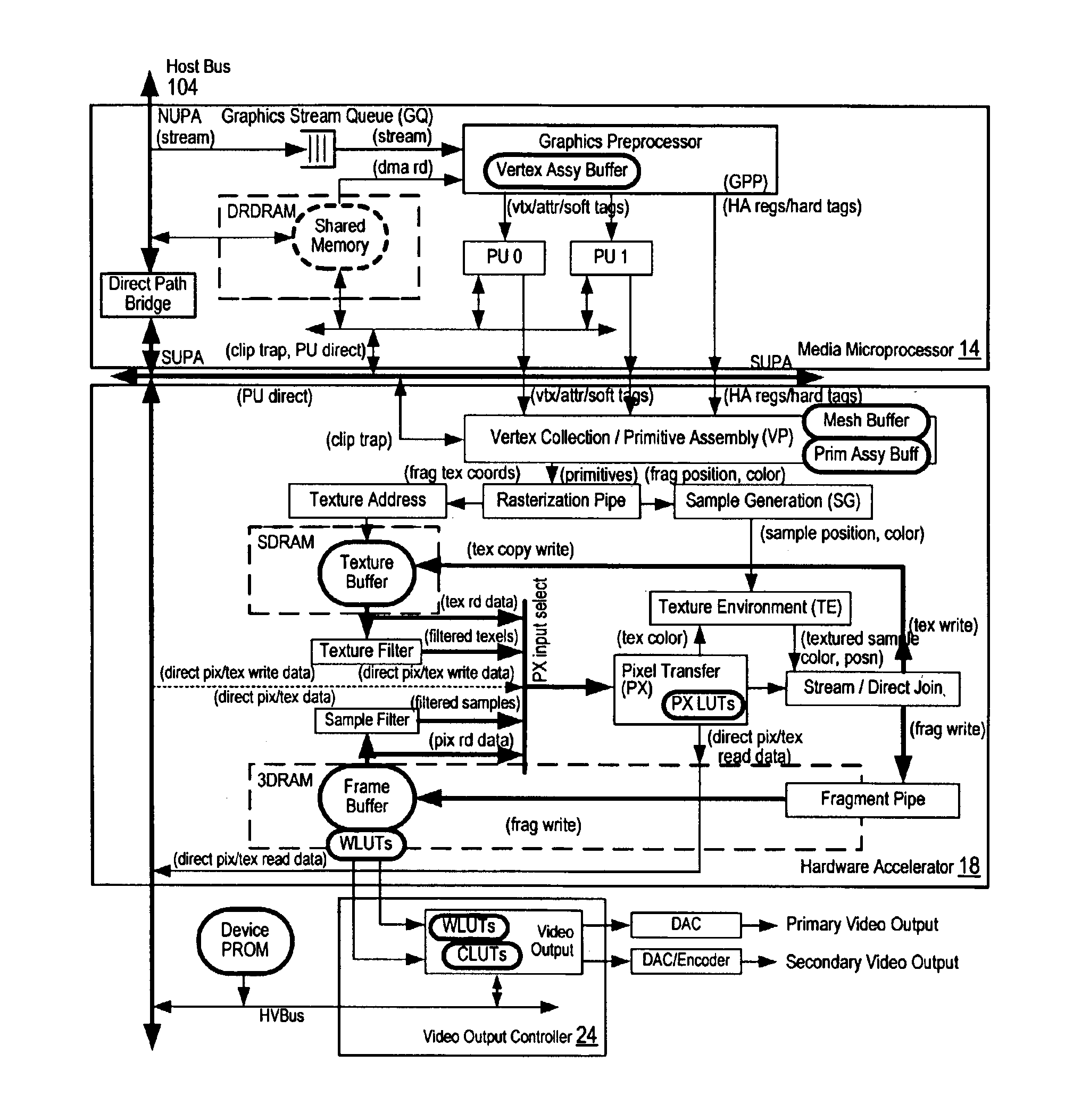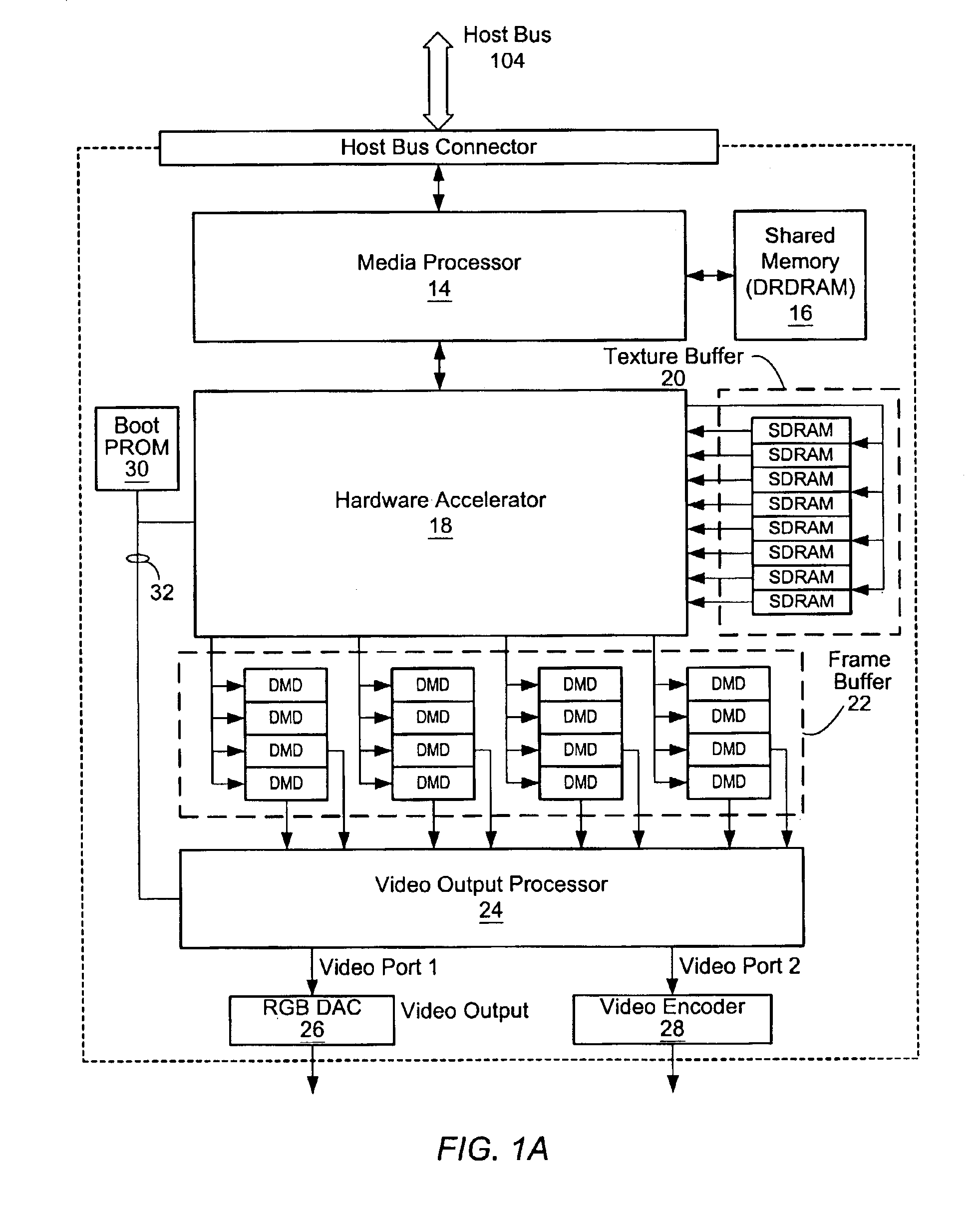Dynamically adjusting sample density in a graphics system
a graphics system and dynamic adjustment technology, applied in static indicating devices, memory adressing/allocation/relocation, instruments, etc., can solve the problems of many graphical computing systems not being configured, image quality suffers when windows are reduced in size, etc., and achieve the effect of maximizing the sample density estima
- Summary
- Abstract
- Description
- Claims
- Application Information
AI Technical Summary
Benefits of technology
Problems solved by technology
Method used
Image
Examples
examples
[0209]For a single-headed 1280×1024 non-stereo display, the display buffer uses (ceil(1280 / 320)*ceil(1024 / 16))=256 pages of FB memory. That leaves (1024−256)=768 pages for a sample buffer at 5120 samples per page.
A 1000×1000 pixel window can support a sample density of 3 since ceil(1000 / 80)*ceil(1000 / 20)=650 pages which is less than 768 pages.
A 720×670 pixel window can support a sample density of 8 since ceil(720 / 40)*ceil(670 / 16)=756 pages which is less than 768 pages.
[0210]For a single-headed 960×680 stereo display, the display buffer uses (ceil(960 / 320)*ceil(680 / 8))=255 pages of FB memory. That leaves (1024−255)=769 pages for a sample buffer. Thus, the same window sizes as in the first example can be supported.
[0211]For a single-headed 640×480 stereo VGA display, the display buffer uses (ceil(640 / 320)*ceil(480 / 8))=120 pages of FB memory. That leaves (1024−120)=904 pages for a sample buffer. A nearly full-screen window (600×480) supports a sample density of 16 since ceil(600 / 40)*ce...
PUM
 Login to View More
Login to View More Abstract
Description
Claims
Application Information
 Login to View More
Login to View More - R&D
- Intellectual Property
- Life Sciences
- Materials
- Tech Scout
- Unparalleled Data Quality
- Higher Quality Content
- 60% Fewer Hallucinations
Browse by: Latest US Patents, China's latest patents, Technical Efficacy Thesaurus, Application Domain, Technology Topic, Popular Technical Reports.
© 2025 PatSnap. All rights reserved.Legal|Privacy policy|Modern Slavery Act Transparency Statement|Sitemap|About US| Contact US: help@patsnap.com



